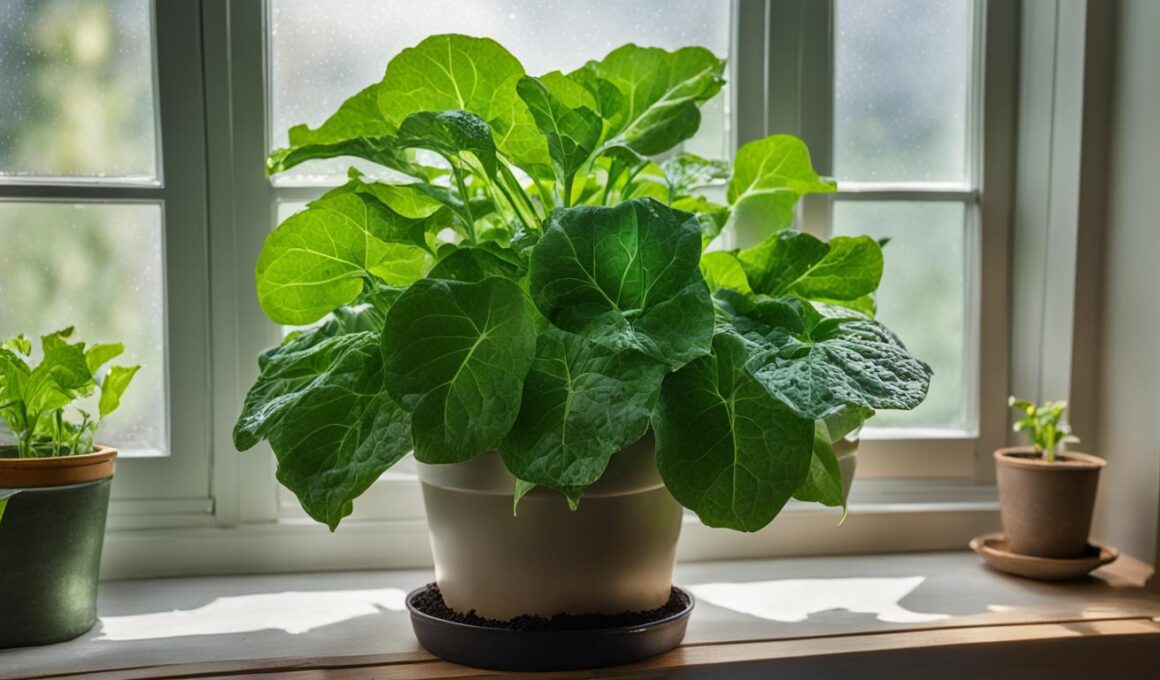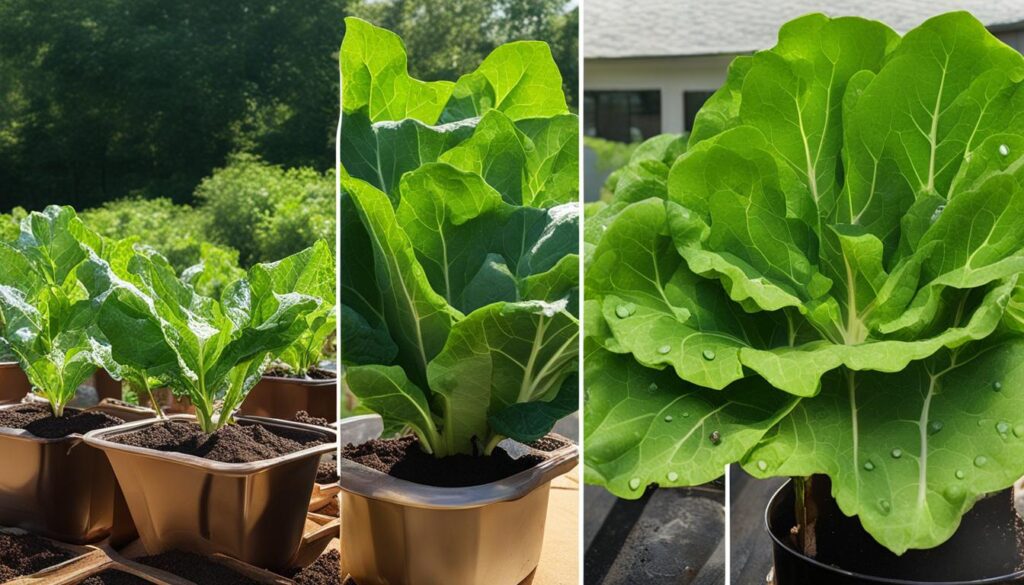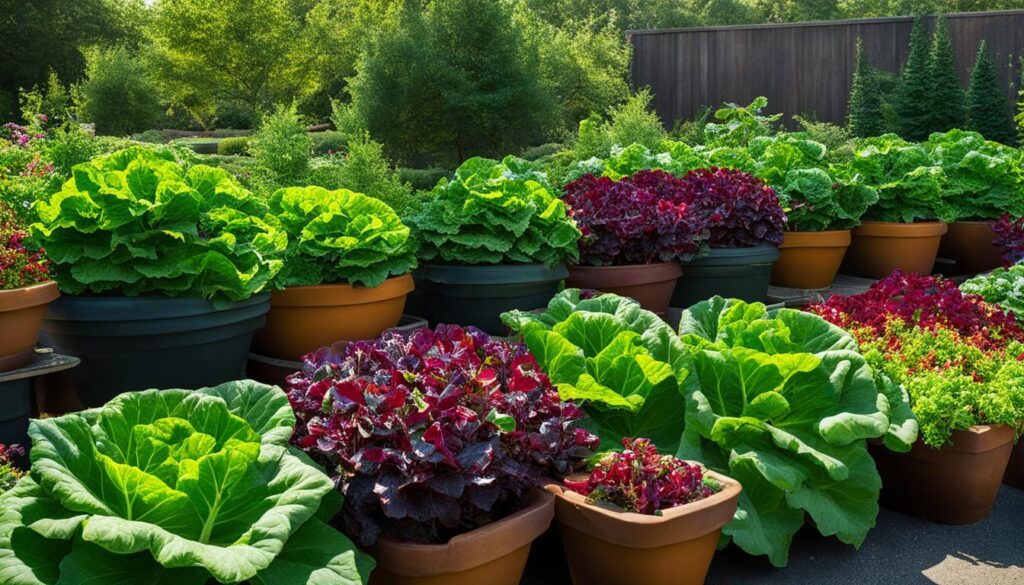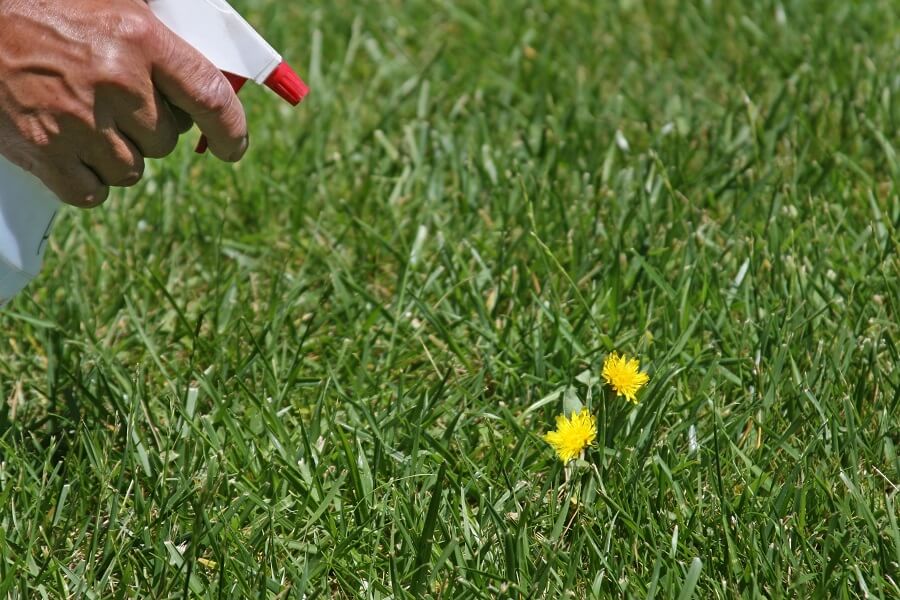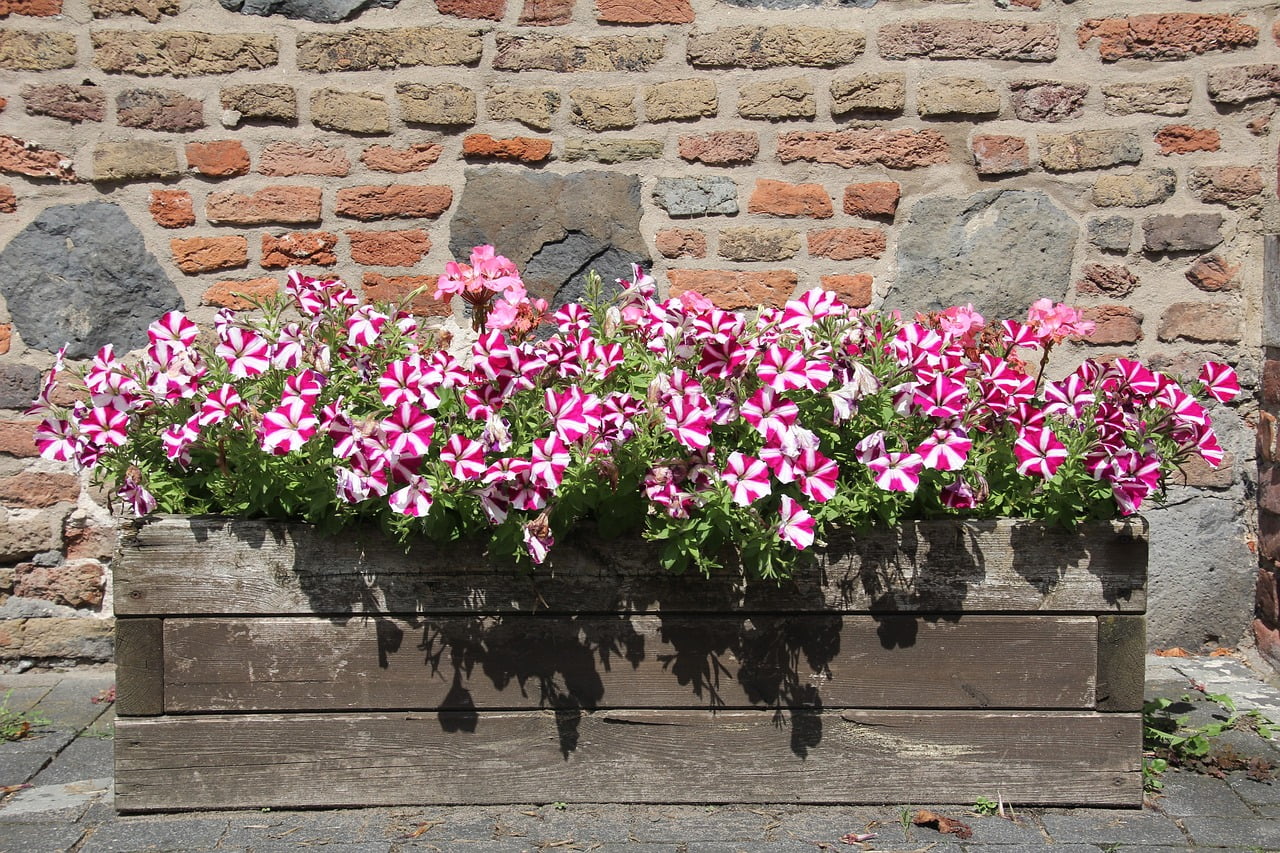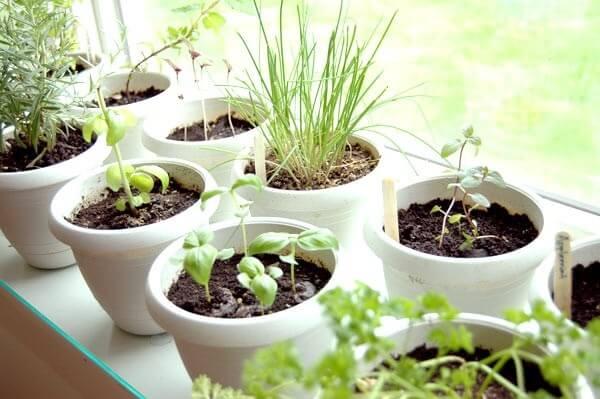Growing tree collards in containers is a rewarding and practical way to have a sustainable, year-round supply of this nutritious vegetable right at your fingertips. Whether you have limited garden space or want to enjoy the benefits of indoor gardening, mastering the art of growing tree collards in containers opens up a world of possibilities.
With the right techniques and care, you can create an ideal environment for your tree collards, ensuring they thrive and provide you with a sustainable yield. From choosing the right containers to providing the ideal growing conditions, this guide will take you step by step through the process of successfully growing tree collards in containers.
Key Takeaways:
- Growing tree collards in containers allows for year-round access to this nutritious vegetable.
- Choosing the right containers is crucial for the success of your tree collards.
- Well-draining soil and regular fertilization are essential for healthy growth.
- Provide your tree collards with ample sunlight, moderate temperatures, and proper watering.
- Regular care and maintenance, including pruning and monitoring for pests and diseases, will ensure optimal growth.
Choosing the Right Containers for Tree Collards
When it comes to growing tree collards in containers, selecting the right containers is crucial for their successful growth. Consider these factors when choosing containers for your tree collards: size, material, and drainage.
Size
Tree collards have deep root systems, so opt for larger containers that can accommodate their growth. A container with a diameter of at least 18 inches and a depth of 12 inches is recommended. This will give the roots enough space to spread out and promote healthy growth.
Material
Choose containers made of durable materials like plastic or fabric. These materials provide good insulation, protecting the roots from extreme temperatures. Plastic containers are lightweight and easy to move around, while fabric containers offer excellent drainage and air circulation.
Drainage
Proper drainage is essential to prevent waterlogging and ensure the health of your tree collards. Look for containers with drainage holes at the bottom to allow excess water to escape. You can also place a layer of gravel or broken pottery shards at the bottom of the container to further enhance drainage.
By carefully choosing the right containers for your tree collards, you can provide them with a suitable environment for growth and maximize their potential. Remember to consider size, material, and drainage to create an ideal home for your tree collards in containers.
Selecting the Right Soil and Fertilizer for Tree Collards
Proper soil and fertilizer selection are crucial for the successful growth of tree collards in containers. By ensuring that your plants have the right nutrients and growing medium, you can promote healthy growth and maximize their yield.
Start by choosing a well-draining soil that is rich in organic matter. Tree collards prefer soil that retains moisture but does not become waterlogged. You can opt for a high-quality potting mix specifically formulated for container gardening, or you can create your own blend by combining compost, peat moss, and vermiculite. This organic-rich soil will provide the necessary nutrients and help your tree collards thrive.
In addition to the right soil, regular fertilization is essential for the optimal growth of tree collards. Use a balanced organic fertilizer to ensure that your plants receive all the necessary nutrients. Look for a fertilizer specifically formulated for leafy vegetables or greens. Follow the manufacturer’s instructions for application rates and frequency, adjusting them based on the specific needs of your tree collards.
Remember, organic fertilizers not only provide essential nutrients but also improve the overall health of the soil, promoting beneficial microbial activity and long-term sustainability.
Monitor your tree collards closely for any signs of nutrient deficiencies, such as yellowing leaves or stunted growth. Adjust your fertilization schedule or consider using foliar sprays if necessary. Remember to water your containers thoroughly after fertilization to prevent any potential nutrient burn.
| Fertilizer Type | Nutrient Composition | Application Rate |
|---|---|---|
| Organic Leafy Greens Fertilizer | 5-3-4 | 1 tablespoon per gallon of water, every 2-3 weeks |
| Compost Tea | Varies based on compost composition | Apply as a soil drench or foliar spray once a month |
By selecting the right soil and fertilizer for your tree collards, you can provide them with the essential nutrients they need to thrive in containers. Remember to monitor their growth, adjust fertilization as needed, and enjoy the abundant harvest of these nutritious greens.
Providing the Ideal Growing Conditions for Tree Collards
When it comes to growing tree collards in containers, providing the ideal growing conditions is crucial for their success. Here are some key factors to consider:
1. Sunlight:
Tree collards require at least six hours of direct sunlight per day to thrive. Place your containers in a sunny spot, such as a south-facing window or balcony, to ensure they receive adequate sunlight. If natural light is limited, you can supplement with artificial grow lights to meet their requirements.
2. Temperature:
Tree collards prefer mild temperatures between 60-75°F (15-24°C). Avoid exposing them to extreme heat or cold, as this can negatively impact their growth. If necessary, provide shade during hot summer days or move them indoors during frosty nights to protect them from temperature fluctuations.
3. Water:
Proper watering is essential for the health of tree collards. Keep the soil consistently moist but not overly saturated to prevent root rot. Check the moisture level regularly by inserting your finger into the soil. If it feels dry up to the first knuckle, it’s time to water. Use room temperature or tepid water to avoid shocking the plants.
4. Humidity:
While tree collards can tolerate average humidity levels, they benefit from moderate humidity. Misting the leaves with water or using a humidifier can help create a more favorable environment for their growth. However, avoid excessive moisture, as it can contribute to fungal diseases.
By ensuring your tree collards receive the right amount of sunlight, maintaining an optimal temperature, providing adequate water, and managing humidity levels, you’ll create the ideal growing conditions for them to thrive in containers. With proper care and attention, you’ll be rewarded with a bountiful harvest of nutritious tree collards throughout the year.
Care and Maintenance of Tree Collards in Containers
Proper care and maintenance are crucial for keeping your tree collards in containers healthy and productive. By following these tips, you can ensure a successful growing experience.
Pruning
Regular pruning is essential for maintaining the compact size of tree collards in containers and encouraging productive growth. Use a sharp pair of pruning shears to remove any dead or damaged leaves or stems. Trim the plant back to maintain its desired shape and allow for new growth to emerge. Pruning also helps improve air circulation, reducing the risk of disease.
Harvesting
When it comes to harvesting tree collards, it’s important to adopt a “bottom-up” approach. Start by harvesting the oldest and lowest leaves first, allowing the younger leaves at the top to continue growing. This ensures a continuous supply of fresh, tender leaves. Choose leaves that are vibrant green and free from any signs of yellowing or pests. Harvesting regularly will also help stimulate new growth.
Pests and Diseases
Tree collards are generally hardy plants, but they can still fall victim to common pests and diseases. Keep an eye out for aphids, cabbage worms, and other insects that may try to feed on the leaves. If you notice any signs of pest infestation, consider using organic pest control methods or introducing beneficial insects to your container garden. Monitor your plants for any signs of diseases such as powdery mildew or leaf spot, and address them promptly to prevent further spread.
By practicing regular pruning, harvesting properly, and staying vigilant against pests and diseases, you can ensure that your tree collards thrive in containers and continue to provide you with a bountiful harvest of nutritious leaves.
| Common Pests | Organic Pest Control Methods |
|---|---|
| Aphids | Introduce ladybugs or use insecticidal soap |
| Cabbage worms | Handpick the worms or use floating row covers |
| Slugs and snails | Set up beer traps or use copper barriers |
Quick Tips:
- Regularly prune to maintain plant size and stimulate growth
- Harvest leaves from the bottom up to encourage new growth
- Monitor for pests and diseases and take prompt action
- Consider organic pest control methods for a chemical-free approach
Can Tree Collards be Grown in Containers the Same Way Collard Greens are Grown?
Yes, tree collards and collard greens comparison are essential for understanding their growing requirements. While collard greens can thrive in containers, tree collards may need larger pots due to their height. Both benefit from well-drained soil and regular watering, but tree collards may need a bit more space to flourish.
Conclusion
Growing tree collards in containers is a practical and rewarding way to enjoy a sustainable yield of this nutritious vegetable all year round. By following the right techniques and providing the ideal growing conditions, you can master the art of growing tree collards in containers and indulge in the joys of indoor gardening.
Choosing the right containers is crucial for successful growth. Opt for larger containers to accommodate the deep root system of tree collards, and look for durable materials like plastic or fabric that provide insulation. Ensure the containers have proper drainage to prevent waterlogging and promote healthy root development.
Additionally, it’s important to select the right soil and fertilizer. Tree collards thrive in well-draining soil enriched with organic matter. Use a high-quality potting mix or create your own blend. Regular fertilization with a balanced organic fertilizer will ensure your tree collards receive all the necessary nutrients for healthy growth.
Providing the ideal growing conditions is key. Tree collards require at least six hours of direct sunlight each day, so find a sunny spot for your containers. Maintain mild temperatures between 60-75°F and water regularly, keeping the soil consistently moist. Moderate humidity levels can be achieved through misting the leaves or using a humidifier.
With proper care and maintenance, you can keep your tree collards in containers compact and productive. Regular pruning will help with this, and harvesting from the bottom up allows new growth to flourish. Keep an eye out for common pests and diseases, promptly addressing any signs of infestation or illness. Regularly check soil moisture levels and adjust your watering accordingly.
Start your own container garden and enjoy the benefits of fresh, homegrown tree collards. With the right containers, growing conditions, and care, you can experience the satisfaction of a sustainable yield of this nutritious vegetable right at your fingertips.
FAQ
What size containers should I choose for growing tree collards?
Opt for larger containers to accommodate the deep root system of tree collards.
What material should I look for in containers for tree collards?
Look for containers made of durable materials like plastic or fabric that will provide good insulation.
Why is drainage important in containers for tree collards?
Proper drainage holes prevent waterlogging and promote healthy root growth.
What kind of soil should I use for growing tree collards in containers?
Tree collards thrive in well-draining soil rich in organic matter. Use a high-quality potting mix or make your own with compost, peat moss, and vermiculite.
How often should I fertilize tree collards in containers?
Regularly fertilize with a balanced organic fertilizer to ensure they receive all the necessary nutrients for healthy growth.
How much sunlight do tree collards in containers need?
Tree collards require at least six hours of direct sunlight per day.
What temperature range is ideal for tree collards in containers?
They prefer mild temperatures between 60-75°F, so avoid extreme heat or cold.
How often should I water tree collards in containers?
Water regularly, keeping the soil consistently moist but not soggy.
Are there any pests or diseases I should watch for with tree collards in containers?
Monitor for common pests like aphids and cabbage worms, and address any signs of diseases such as powdery mildew promptly.
How should I prune tree collards in containers?
Regular pruning is essential to keep tree collards in containers compact and productive. Harvest the leaves from the bottom up, allowing new growth to thrive.





